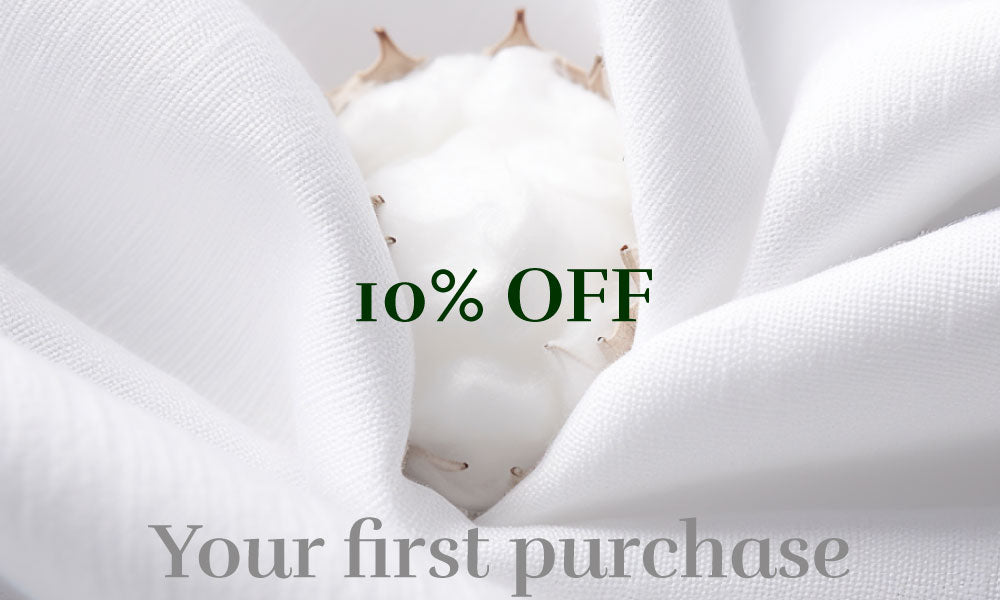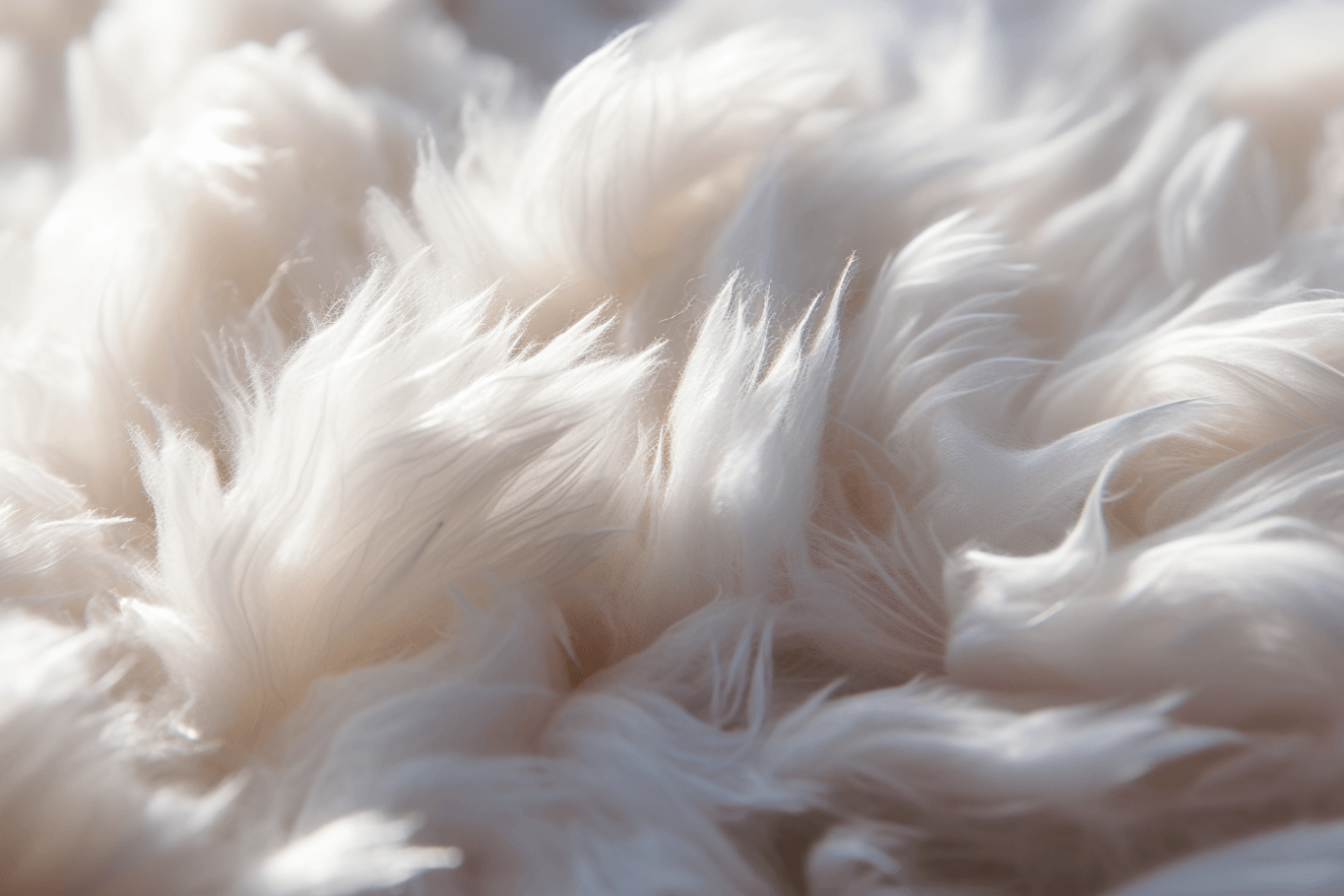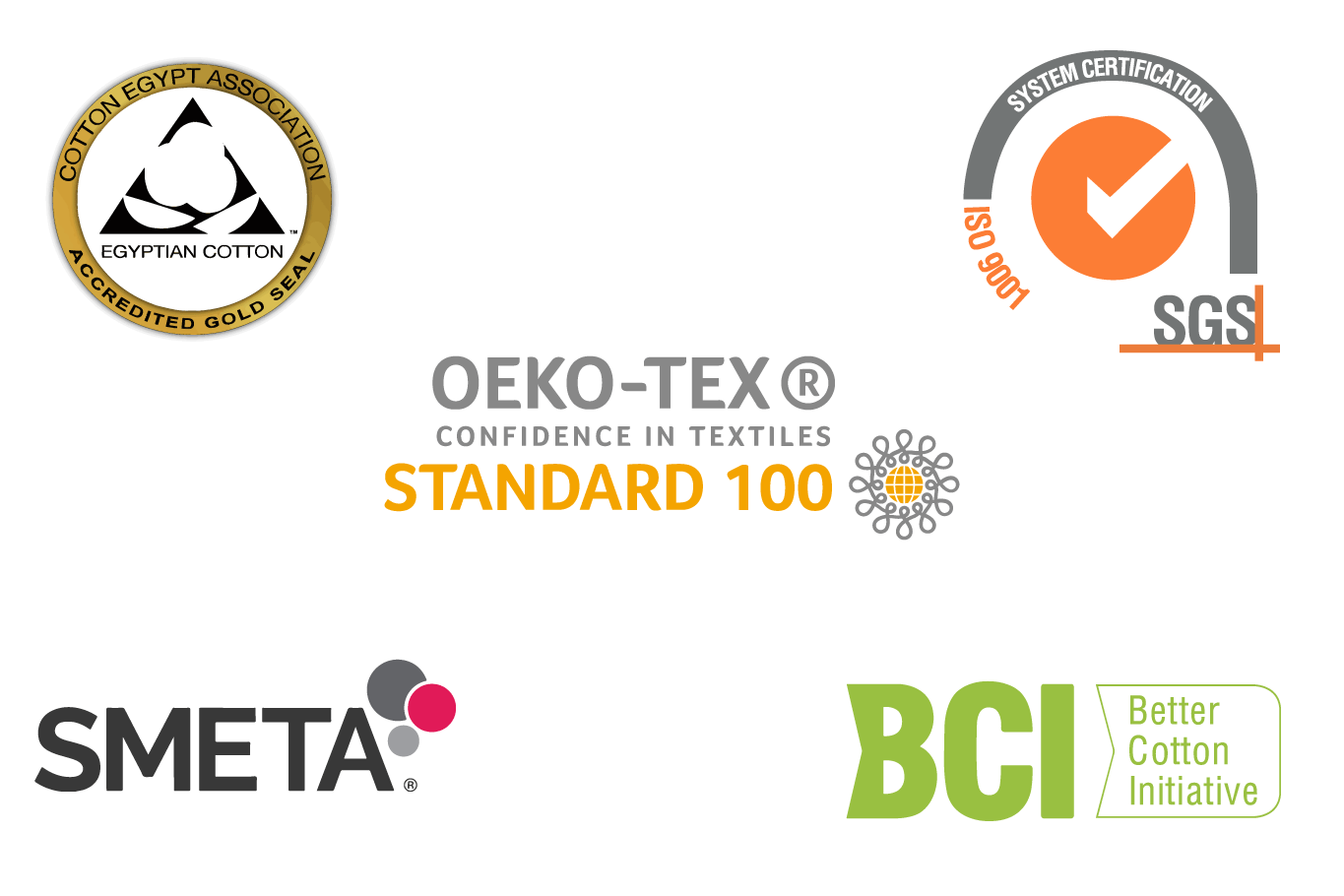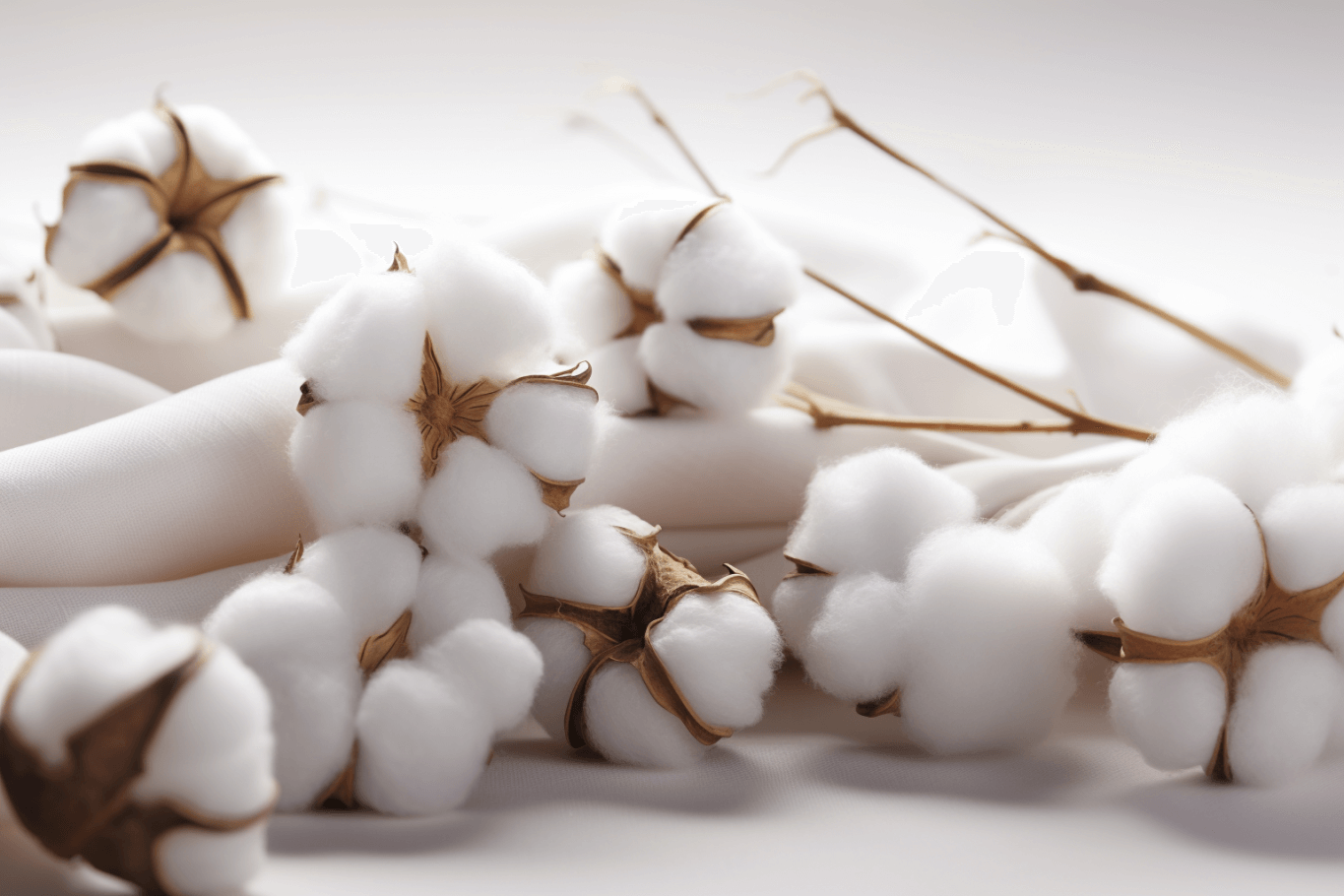Choosing the right fabric is not just a matter of fashion or personal preference – it also affects the health of your skin. The textiles we use have a direct impact on our skin's well-being, affecting everything from irritation and rashes to moisture levels and overall comfort. In this article, we explore the various ways different textiles influence your skin's health and provide insights into making informed choices. For centuries, cotton has been the go-to fabric for its breathability and softness. However, silk, with its luxurious feel and hypoallergenic properties, is gaining popularity as a skin-friendly option. We delve into the benefits and drawbacks of these textiles, examining their impact on sensitive skin, moisture retention, and temperature regulation. Furthermore, we explore other textiles such as linen, bamboo, and synthetics, highlighting their unique characteristics and potential impact on your skin's health. Whether you have sensitive skin or are simply looking for comfortable and skin-friendly textiles, this article equips you with the knowledge to make informed decisions when it comes to any textile choices from clothing to bedding
Cotton: The benefits and drawbacks for skin health
Cotton has been the go-to fabric for centuries due to its breathability and softness. It is a natural fibre that allows air to circulate, keeping your skin cool and dry. The softness of cotton also reduces friction against the skin, minimizing the risk of irritation and chafing. Additionally, cotton is hypoallergenic, making it suitable for individuals with sensitive skin or allergies.
However, cotton does have some drawbacks. It tends to retain moisture, which can be problematic for those with excessive sweating or certain skin conditions. The moisture retention can lead to a damp environment, promoting the growth of bacteria and fungi, potentially causing skin infections or unpleasant odours. Furthermore, cotton can wrinkle easily and may require frequent ironing or pressing to maintain a smooth appearance.
Despite these drawbacks, cotton remains a popular choice for everyday wear due to its comfort, versatility, and affordability. By choosing high-quality cotton fabrics and practicing proper care, you can enjoy the benefits of cotton while minimizing its drawbacks.
It's important to note that with cotton being such a widely used fabric, there are many levels of quality to it and that can have a significant impact to its properties. Have you ever wondered why, for example a T-shirt made from 100% Cotton, can cost anywhere from £10 all the way up to £100 and even more? Yes, part of it is influenced by the Brand, but a significant and often overlooked factor is the quality of cotton itself - where it's sourced from, how it's treated, how it's grown, etc. Investing in high quality cotton textiles, whether it's a shirt or a bedding set, will usually pay off in the long term as the products tend to last much longer and many of the usual drawbacks that come with cotton as a fabric are usually mitigated

Silk: The benefits and drawbacks for skin health
Silk, often associated with luxury and elegance, has gained popularity as a skin-friendly fabric. It is known for its smooth texture and hypoallergenic properties, making it an excellent choice for individuals with sensitive skin. Silk is less likely to cause irritation or allergies compared to other fabrics, as it is composed of natural proteins that are similar to those found in human skin.
Silk also has the ability to regulate temperature, keeping you cool in hot weather and warm in cold weather. It is highly breathable and wicks away moisture, allowing your skin to stay dry and comfortable. The smooth surface of silk also reduces friction, preventing wrinkles and minimizing the formation of sleep lines and creases on your skin.
However, silk does have some drawbacks. It is a delicate fabric that requires special care, including handwashing or gentle machine washing. Silk is also prone to staining and may require professional dry cleaning for tougher stains. Additionally, silk can be expensive compared to other fabrics, making it less accessible for some individuals.
Despite these drawbacks, silk's luxurious feel and skin-friendly properties make it an excellent choice for special occasions or for individuals seeking a fabric that prioritizes skin health and comfort.
Linen: The benefits and drawbacks for skin health
Linen, derived from the flax plant, is a natural fabric that is highly breathable and absorbent. It has a unique texture that allows air to circulate freely, keeping your skin cool and dry in hot and humid weather. Linen is also hypoallergenic and antimicrobial, making it suitable for individuals with sensitive skin or allergies.
One of the drawbacks of linen is its tendency to wrinkle easily, requiring frequent ironing or steaming to maintain a neat appearance. It can also feel rough or stiff initially, but it softens with each wash and wear. Additionally, linen does not retain moisture well, which can be a disadvantage for those with dry skin or in colder climates.
Despite these drawbacks, linen is a popular choice for summer clothing due to its breathability and natural cooling properties. It is also a sustainable fabric, as flax plants require less water and pesticides compared to other crops, making it an eco-friendly option.
Polyester: The benefits and drawbacks for skin health
Polyester, a synthetic fabric, is known for its durability, affordability, and versatility. It is resistant to wrinkles, shrinking, and fading, making it a low-maintenance choice for everyday wear. Polyester is also moisture-wicking, which can be beneficial for individuals with excessive sweating or in humid environments, as it helps keep the skin dry.
However, polyester is not as breathable as natural fibres like cotton or linen, which can lead to discomfort and excessive sweating in hot weather. It can also cause static cling and trap odours, requiring more frequent washing to keep it fresh. Additionally, some individuals may be sensitive or allergic to polyester, experiencing skin irritation or rashes.
Despite these drawbacks, polyester is widely used in activewear, sportswear, and outdoor clothing due to its durability and moisture-wicking properties. When blended with natural fibres, it can offer the benefits of both synthetic and natural fabrics, creating a balance between comfort and performance.
Wool: The benefits and drawbacks for skin health
Wool is a natural fibre known for its warmth, insulation, and moisture-wicking properties. It is an excellent choice for colder climates or outdoor activities, as it provides insulation by trapping air between its fibres. Wool is also naturally breathable and can absorb moisture without feeling damp, making it suitable for individuals with sweaty or damp-prone skin.
However, wool can be irritating to some individuals, causing itching or allergic reactions. It is also more prone to shrinking and requires special care, including handwashing or dry cleaning. Additionally, wool can be heavy and bulky, making it less suitable for lightweight or form-fitting clothing.
Despite these drawbacks, wool is a versatile fabric that can be used in a variety of clothing, bedding, and accessories. It is valued for its natural properties and ability to provide warmth and comfort without overheating.
Blended fabrics: The benefits and drawbacks for skin health
Blended fabrics, as the name suggests, are a combination of different fibres, usually natural and synthetic. By blending fibres, manufacturers aim to create fabrics that combine the benefits of both materials. For example, a cotton-polyester blend may offer the comfort and breathability of cotton with the durability and wrinkle resistance of polyester.
The benefits of blended fabrics include increased durability, improved moisture-wicking properties, and reduced wrinkling. Blends can also be more cost-effective compared to pure natural fibres or luxurious fabrics like silk or premium-grade cotton. However, the specific benefits and drawbacks of blended fabrics depend on the combination of fibres used.
When choosing blended fabrics, it is important to consider your skin's sensitivities and preferences. Some individuals may find certain blends more comfortable or irritating than others. It is also essential to check the care instructions for blended fabrics, as they may require specific washing and care methods to maintain their quality and performance.

Choosing the right fabric for your skin type
When it comes to choosing the right fabric for your skin type, there are a few factors to consider. Firstly, identify any sensitivities or allergies you may have to certain fabrics. If you have sensitive skin, it is best to opt for hypoallergenic fabrics like silk or premium cotton.
Secondly, consider the climate and season. In hot and humid weather, breathable and moisture-wicking fabrics like cotton or linen are ideal. For colder climates, wool or wool-blend fabrics provide insulation and warmth.
Lastly, pay attention to the texture and feel of the fabric. Some individuals may find certain fabrics more comfortable or irritating against their skin. It is always recommended to try on different fabrics and observe how your skin reacts before making a purchase.
By considering these factors and understanding the benefits and drawbacks of different fabrics, you can make informed choices that promote healthier and more comfortable skin.
Proper care for textiles to maintain skin health
No matter the fabric you choose, proper care is essential to maintain its quality and promote skin health. Here are some general tips for caring for textiles:
- Always follow the care instructions on the garment's label. Different fabrics require specific washing, drying, and ironing methods.
- Wash bedding or clothing before using them for the first time to remove any chemicals or dyes that may cause skin irritation.
- Avoid using harsh detergents or fabric softeners that can leave residue on the fabric and irritate the skin.
- Choose fragrance-free and hypoallergenic laundry products, especially if you have sensitive skin.
- Wash clothing in cool or lukewarm water to prevent excessive shrinking or colour fading.
- Avoid excessive heat when drying clothes, as it can damage certain fabrics and cause them to lose their shape.
- Store clean clothing in a cool and dry place to prevent mould or mildew growth.
By caring for your textiles properly, you can extend their lifespan and ensure that they remain comfortable and skin-friendly.
Final Thoughts: Making informed choices for healthier skin
The textiles we choose to wear have a significant impact on our skin's health and overall comfort. From cotton to silk, linen to polyester, each fabric has its own benefits and drawbacks. By understanding these characteristics and considering our individual skin types, sensitivities, and preferences, we can make informed choices that promote healthier and more comfortable skin.
Remember to pay attention to factors such as breathability, moisture-wicking properties, temperature regulation, and texture when selecting fabrics. Additionally, proper care and maintenance of textiles are crucial to ensure their longevity and skin-friendly properties.
Ultimately, the right fabric for you is the one that makes you feel comfortable, confident, and supports your skin's well-being. So, go ahead and embrace the world of textiles, making choices that prioritize your skin's health and enhance your overall lifestyle.
Here for you
Choosing the right fabric is a powerful way to enhance your comfort and skin health. With a deep understanding of the unique attributes of each textile, from the breathability of cotton to the luxury of silk, you're well-equipped to make decisions that align with your lifestyle and well-being.
Each fabric offers its own set of advantages, whether you're navigating skin sensitivities, adapting to different climates, or simply seeking the ultimate in luxury. The textiles you select have the potential to transform your daily life, offering a blend of comfort, style, and health benefits.
We're here to help and we always love a good chat so if you have any questions please feel free to reach out to us on hello@ebbandweave.co.uk.
Sign up to Ebb Insights for more stories, guides and personal offers





Leave a comment
This site is protected by hCaptcha and the hCaptcha Privacy Policy and Terms of Service apply.